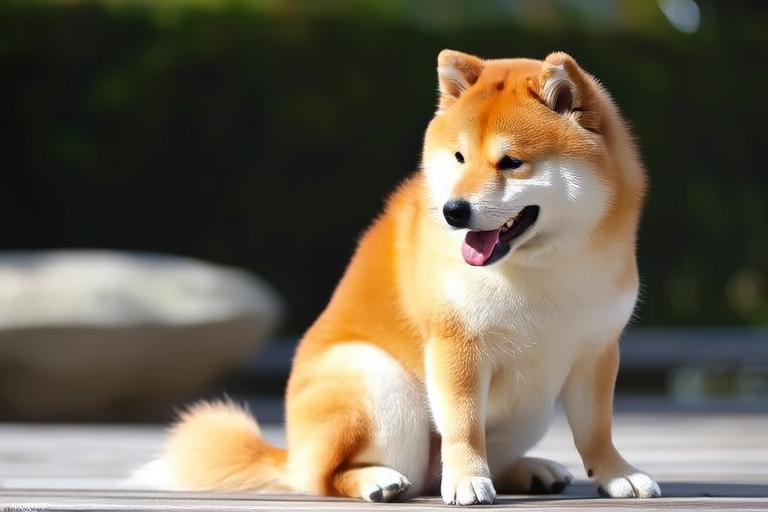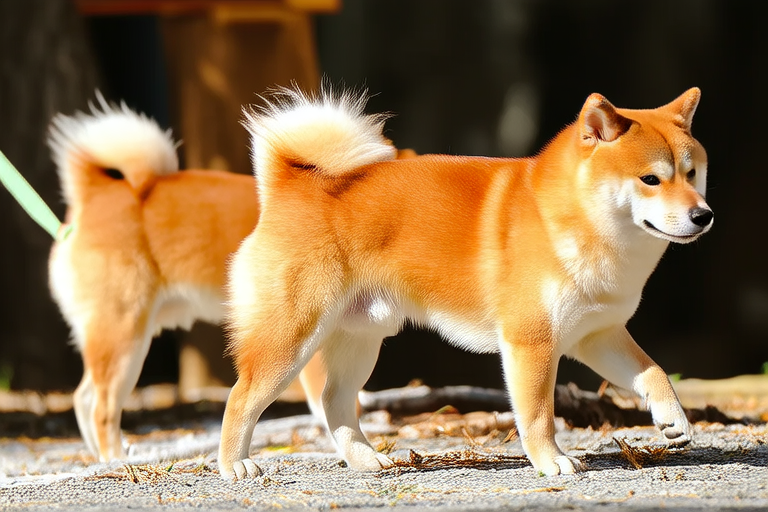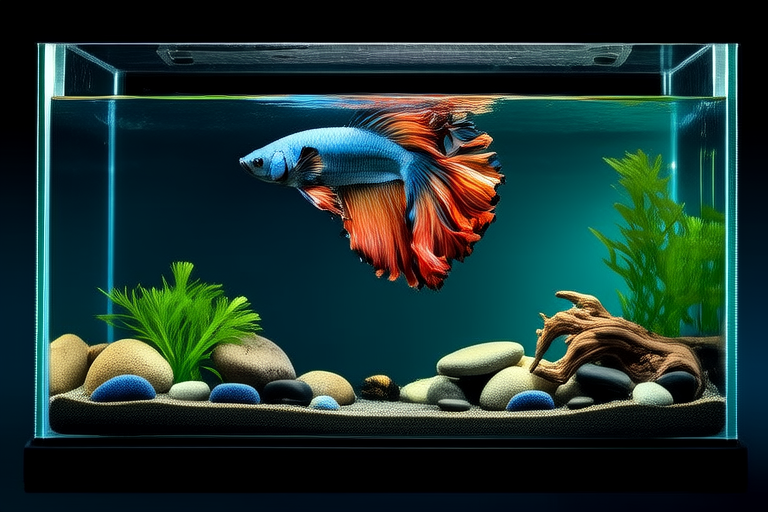
The Mysterious Shibas: A Journey Through History, Culture, and Characteristics
Shibas are one of the oldest dog breeds native to Japan, known for their small yet sturdy build, striking appearance, and enigmatic charm. Their history traces back to ancient times, where they were bred for hunting in the dense forests of Japan. Today, Shibas have become a popular choice among dog enthusiasts worldwide, but what makes them truly unique? This article delves into the rich history, cultural significance, physical traits, temperament, and care requirements of Shibas, offering insights into their mysterious allure.
A Brief History of Shibas
The origin of the Shiba Inu dates back to the third century B.C., making them one of the oldest dog breeds in Japan. Originally used as hunting dogs, Shibas were adept at flushing out small game such as birds and rodents. The name “Shiba” translates to “brushwood,” referring to the thickets and bushes where they hunted. Another interpretation suggests that “shiba” means “small,” which fits well with their compact size. Despite their small stature, Shibas are robust and agile, capable of navigating through rugged terrains with ease.
During World War II, Shibas nearly faced extinction due to bombing campaigns and canine distemper outbreaks. However, dedicated breeders worked tirelessly to revive the breed by crossbreeding surviving Shibas with other Japanese breeds. By the mid-20th century, Shibas regained popularity and became recognized by the American Kennel Club (AKC) in 1993. Today, Shibas are cherished not only in Japan but also in various countries around the world.
Cultural Significance in Japan
In Japan, Shibas hold a special place in the hearts of many. They are often associated with loyalty, bravery, and resilience, qualities highly valued in Japanese culture. Shibas have been featured in numerous artworks, literature, and media throughout history, symbolizing the connection between humans and nature. Their presence in traditional Japanese homes reflects the country’s deep-rooted respect for animals and the environment.
One of the most famous depictions of Shibas can be found in the iconic image of a Shiba Inu sitting on a rock, captured by photographer Shigeo Ogawa in 1965. The photo, titled “The Rock,” has become an enduring symbol of Shibas’ serene and contemplative nature. This image showcases the breed’s ability to blend seamlessly with its surroundings, embodying the spirit of wabi-sabi, a Japanese aesthetic philosophy that appreciates imperfection and simplicity.
Physical Traits and Appearance
Shibas are small to medium-sized dogs with a compact, muscular build. Males typically stand about 14.5 to 16 inches tall at the shoulder, while females are slightly shorter at 13.5 to 15 inches. They weigh between 17 to 23 pounds, making them an ideal size for apartment living. Shibas have a double coat, consisting of a soft undercoat and a straight, coarse outer coat. Their fur comes in three primary colors: red, sesame (red fur with black tips), and black and tan.
One of the most distinctive features of Shibas is their fox-like face, characterized by triangular ears, dark almond-shaped eyes, and a slightly upturned tail. Their expressive eyes and alert demeanor give them an almost mischievous appearance, adding to their charm. Shibas are known for their cat-like agility, often seen perching on high surfaces or climbing fences. This trait is particularly evident during playtime, where they display remarkable dexterity and curiosity.
Temperament and Behavior
Shibas are renowned for their independent and aloof nature, often described as having a “cat-like” personality. While they may seem distant at first glance, Shibas form strong bonds with their families and are fiercely loyal. However, they tend to be reserved with strangers and may exhibit protective behavior if they sense a threat. This combination of independence and loyalty makes Shibas excellent watchdogs without being overly aggressive.
Training Shibas can be challenging due to their stubbornness and tendency to think independently. Positive reinforcement methods, such as treats and praise, work best when teaching them basic commands. Consistency and patience are key when working with Shibas, as they respond poorly to harsh corrections or punishment. Early socialization is crucial to ensure that Shibas grow up to be well-adjusted and friendly companions.
Compared to other breeds, Shibas are less prone to excessive barking and are generally quiet dogs. However, they can be vocal when they feel the need to communicate, especially if they want attention or are expressing discomfort. Shibas are known for their “shiba scream,” a high-pitched yelp that they use to express excitement, frustration, or pain. This unique vocalization adds to their mystique and charm.
Mystery and Appeal
What sets Shibas apart from other dog breeds is their air of mystery and intrigue. Their independent nature, combined with their striking appearance, creates an aura of enigma that captivates dog lovers. Shibas are not the type of dog that seeks constant attention or affection; instead, they prefer to observe and interact on their own terms. This independence makes Shibas appealing to individuals who appreciate a more self-reliant companion.
Shibas’ aloofness can be both a blessing and a challenge. While it allows them to maintain their individuality and avoid becoming overly dependent on their owners, it also requires patience and understanding from those who wish to bond with them. For potential owners, it is essential to recognize that Shibas are not for everyone. They thrive in households where their independence is respected and where they can engage in activities that stimulate their minds and bodies.
Common Health Issues
Like all dog breeds, Shibas are susceptible to certain health conditions. Some of the most common issues include hip dysplasia, patellar luxation, and eye problems such as progressive retinal atrophy (PRA). Regular veterinary check-ups and genetic testing can help identify potential health risks early on. Maintaining a balanced diet and providing adequate exercise can also contribute to Shibas’ overall well-being.
Shibas have a lifespan of approximately 12 to 15 years, making them a long-term commitment for potential owners. Proper care and attention can help extend their lives and ensure they lead healthy, happy lives. It is important to choose a reputable breeder who prioritizes the health and welfare of their dogs. Responsible breeding practices, such as genetic testing and careful selection of breeding pairs, can significantly reduce the risk of inherited diseases.
Training Tips
Training Shibas requires a unique approach due to their independent and sometimes stubborn nature. Positive reinforcement techniques, such as treats and praise, are highly effective when teaching basic commands. Consistency and patience are key when working with Shibas, as they respond poorly to harsh corrections or punishment. Early socialization is crucial to ensure that Shibas grow up to be well-adjusted and friendly companions.
Shibas excel in agility training, thanks to their natural athleticism and love for challenges. Providing them with opportunities to run, jump, and explore can help satisfy their physical needs and keep them mentally stimulated. Interactive toys and puzzle feeders are excellent tools for keeping Shibas engaged and entertained. Mental stimulation is just as important as physical exercise for Shibas, helping to prevent boredom and destructive behaviors.
Comparison with Other Breeds
When compared to other small to medium-sized breeds, Shibas stand out for their unique combination of independence, intelligence, and adaptability. While breeds like the Cavalier King Charles Spaniel and the Bichon Frise are known for their affectionate and playful personalities, Shibas offer a more reserved and self-reliant companion. This makes them an excellent choice for individuals who appreciate a dog that is not overly demanding of attention.
Shibas share some similarities with other Japanese breeds, such as the Akita and the Shikoku. Both the Akita and Shikoku are larger than Shibas and have a more robust build, but they share the same loyalty and protective instincts. Shibas, however, are more agile and better suited for smaller living spaces. Compared to Western breeds like the Border Collie or the German Shepherd, Shibas are less likely to require extensive training or specialized jobs. Instead, they thrive in environments where they can enjoy a balance of freedom and companionship.
Conclusion
The Shiba Inu is a breed that continues to captivate dog enthusiasts and potential owners alike with its rich history, cultural significance, and unique characteristics. From their ancient origins as hunting dogs to their current status as beloved companions, Shibas have earned their place in the hearts of many. Their independent nature, combined with their striking appearance and charming personality, makes them a fascinating breed to explore.
For those considering adopting a Shiba, it is important to understand and embrace their independent spirit. With proper care, training, and attention, Shibas can become loyal and loving members of any family. Whether you’re a seasoned dog owner or a first-time pet parent, Shibas offer a rewarding and enriching experience that will leave you enchanted by their mysterious allure.





